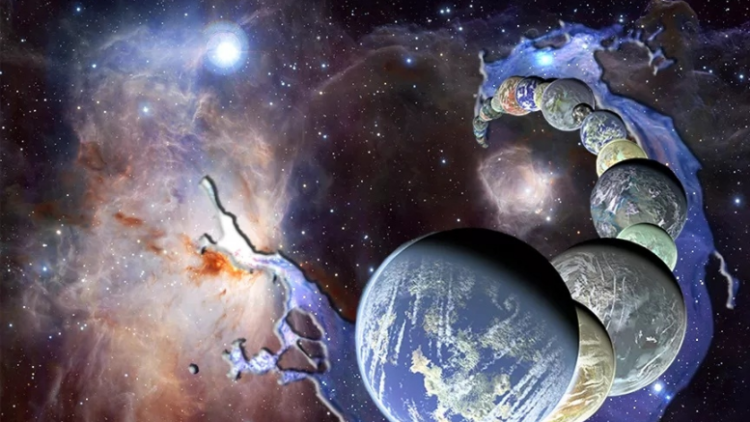Water that you drink and use for daily chores was formed in the interstellar space long before our Sun came to life, a study has revealed, finding the missing link for water in our solar system.
Using the Atacama Large Millimeter/submillimeter Array (ALMA) telescope, astronomers detected gaseous water in the planet-forming disc around the star named ‘V883 Orionis’ about 1300 light-years away from Earth.
This water carries a chemical signature that explains the journey of water from star-forming gas clouds to planets, and supports the idea that water on Earth is even older than our Sun.
“We can now trace the origins of water in our Solar System to before the formation of the Sun,” said John J. Tobin, an astronomer at the National Radio Astronomy Observatory in the US and lead author of the study published in Nature.
When a cloud of gas and dust collapses, it forms a star at its centre. Around the star, material from the cloud also forms a disc. Over the course of a few million years, the matter in the disc clumps together to form comets, asteroids, and eventually planets.
Tobin and his team used ALMA, in which the European Southern Observatory (ESO) is a partner, to measure chemical signatures of the water and its path from the star-forming cloud to planets.
Tobin’s team studied a slightly heavier version of water where one of the hydrogen atoms is replaced with deuterium — a heavy isotope of hydrogen.
Because simple and heavy water form under different conditions, their ratio can be used to trace when and where the water was formed.
“For instance, this ratio in some Solar System comets has been shown to be similar to that in water on Earth, suggesting that comets might have delivered water to Earth,” the researchers wrote.
“V883 Orionis is the missing link in this case,” said Tobin.
The composition of the water in the disc is very similar to that of comets in our own solar system.
“This is confirmation of the idea that the water in planetary systems formed billions of years ago, before the Sun, in interstellar space, and has been inherited by both comets and Earth, relatively unchanged,a the researcher noted.
However, observing the water turned out to be tricky.
“Most of the water in planet-forming discs is frozen out as ice, so it’s usually hidden from our view,” said co-author Margot Leemker, a PhD student at Leiden Observatory in the Netherlands.
In the future, they hope to use ESO’s upcoming Extremely Large Telescope and its first-generation instrument METIS. This mid-infrared instrument will be able to resolve the gas-phase of water in these types of discs.
“This will give us a much more complete view of the ice and gas in planet-forming discs,” said Leemker.























